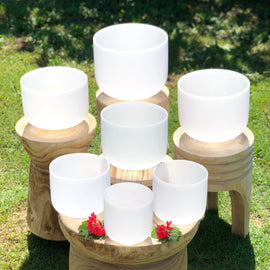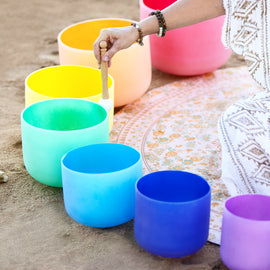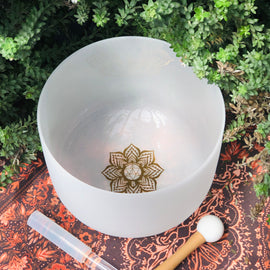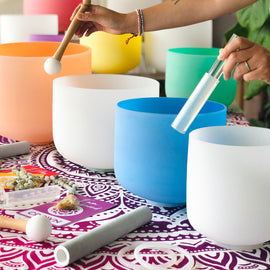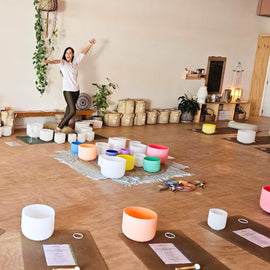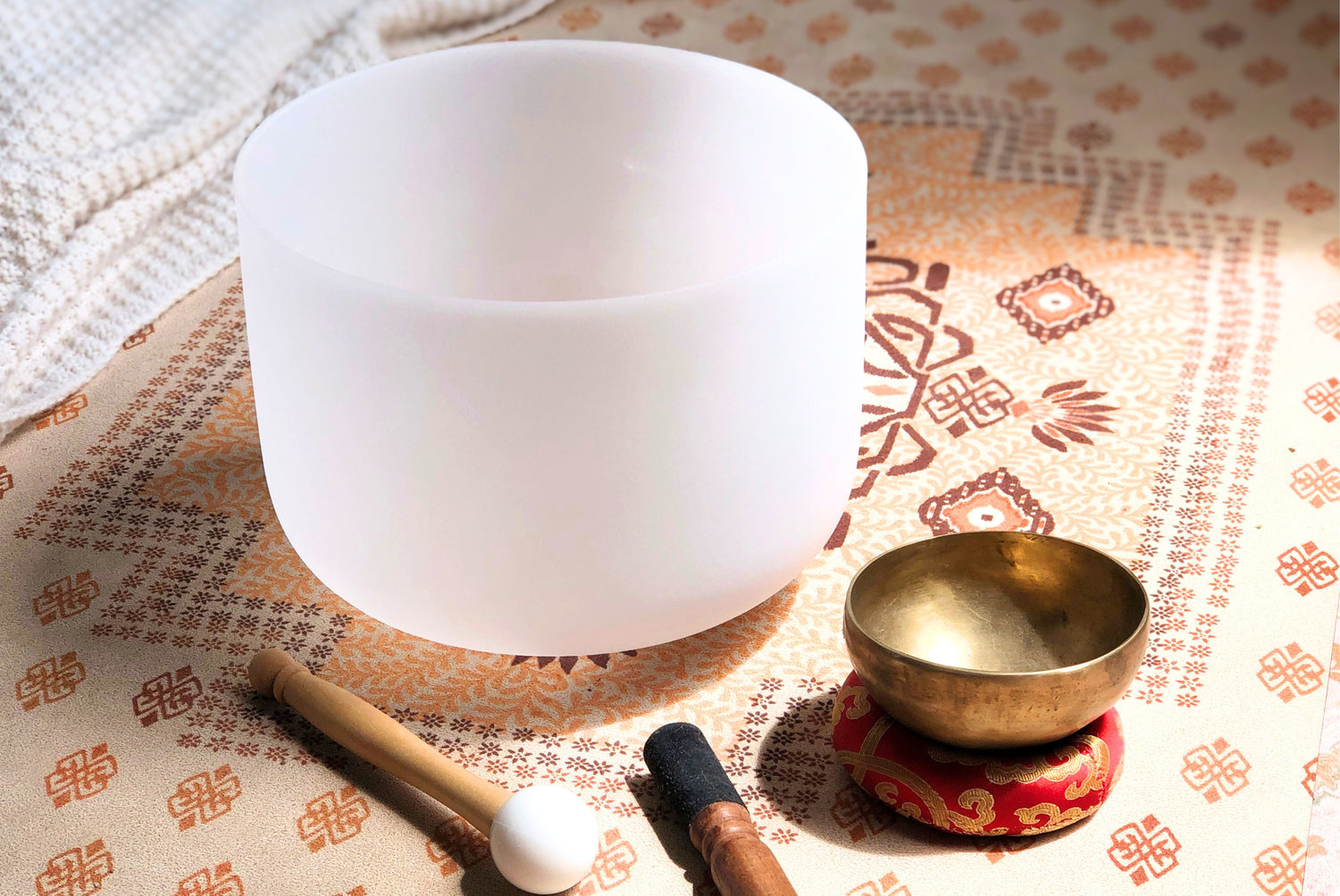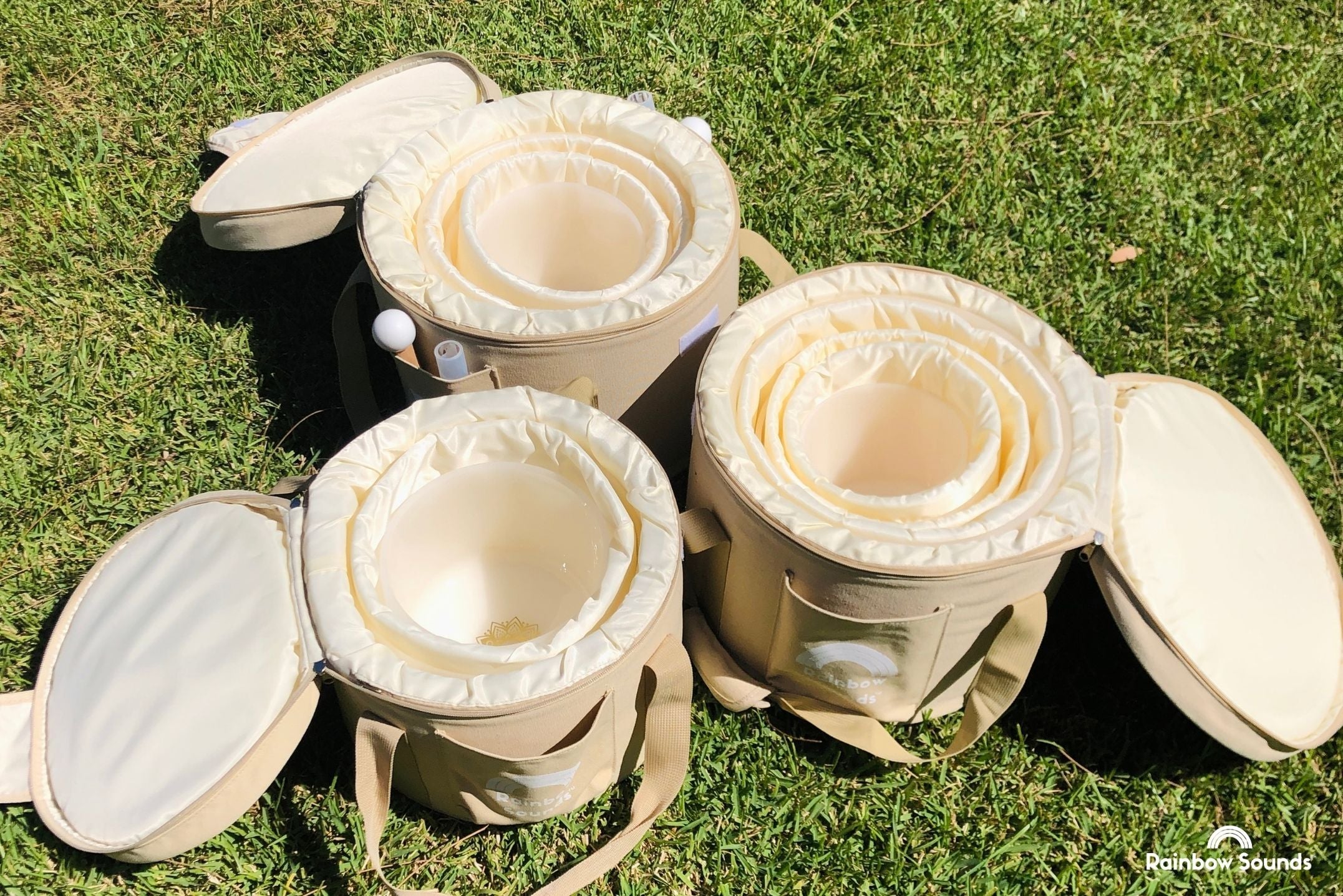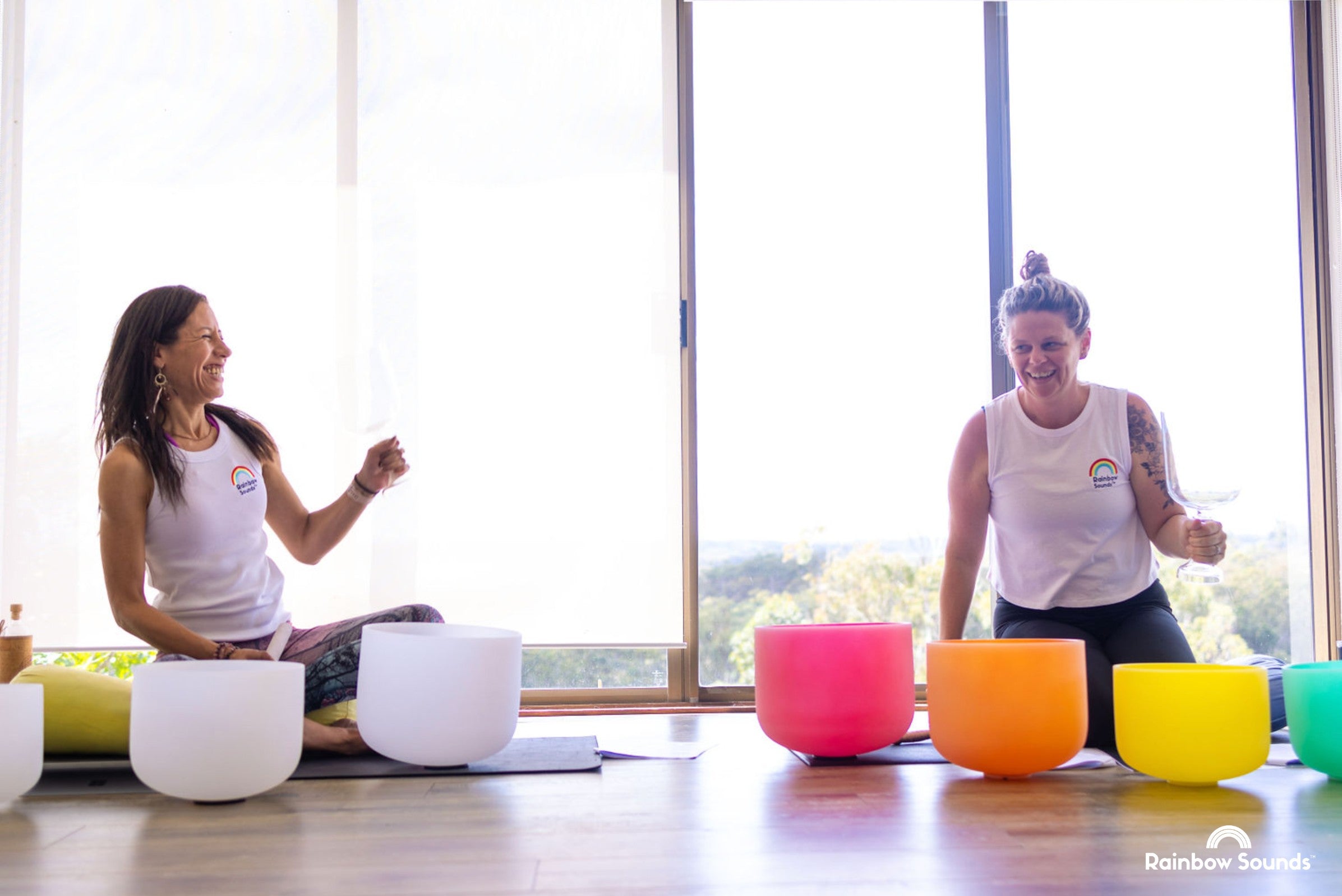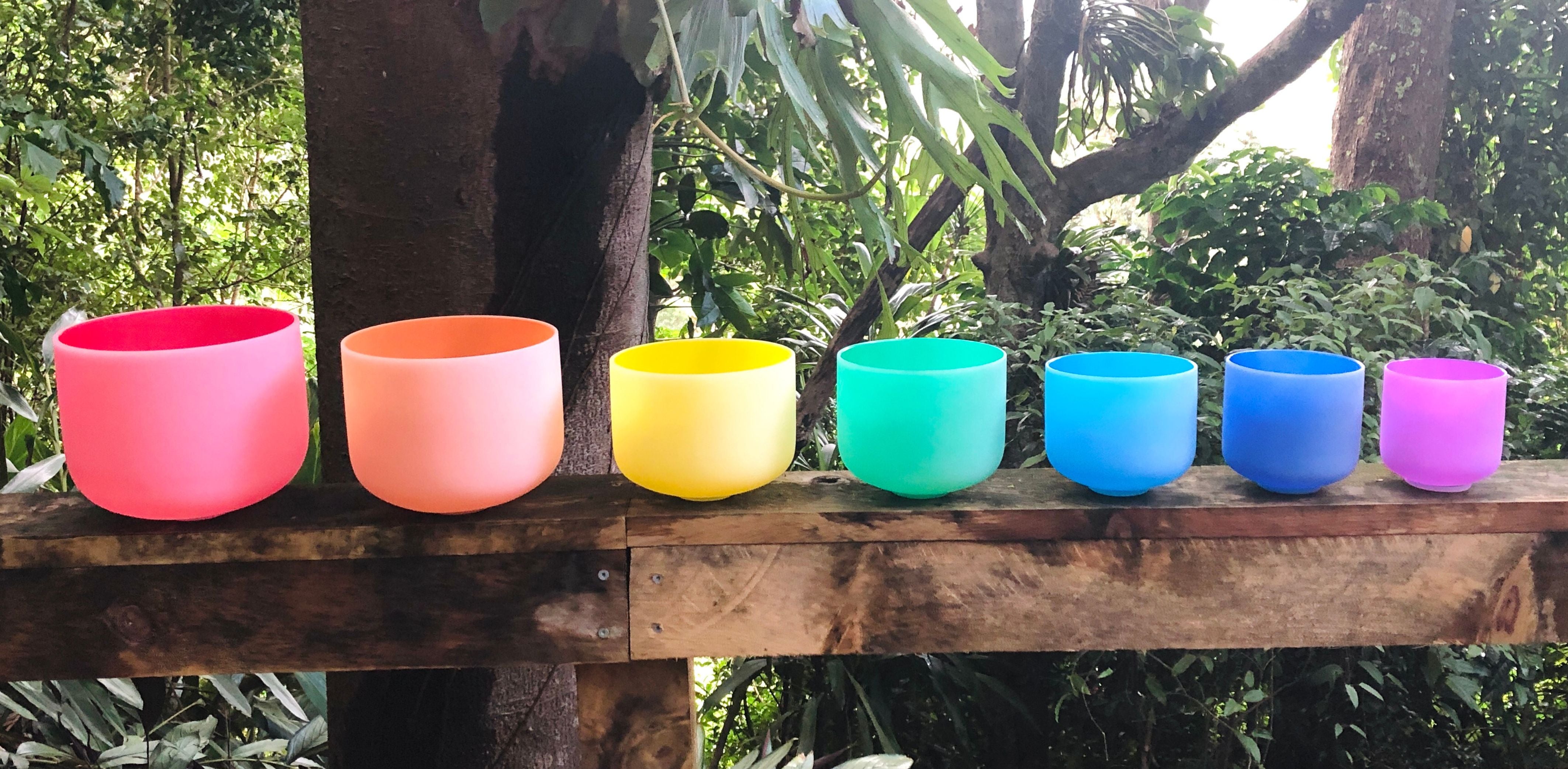Tibetan Metal Bowls and Crystal Singing Bowls are both popular sound meditation and relaxation tools, but there are distinct differences between these incredible instruments.
Composition & Materials
Metal Bowls – also known as Tibetan bowls – are traditionally made from a blend of metals such as copper, bronze, brass or a mix. The melted down metals or mix of metals are shaped using traditional techniques or can be machine produced to form into a bowl shape. Metal bowls tend to be sturdy and durable.
Crystal Singing Bowls are made from quartz crystal, other crystals (such as rose quartz or amethyst) or a blend (example is glass/quartz blend). Rainbow Sounds Crystal Singing Bowls in particular are made from High Purity Australian Quartz.
The quartz is very finely grounded and in fact looks like white power – technically this form is called SiO2 in the High Purity grade scale. Whilst Rainbow Sounds Crystal Singing Bowls are produced with this high grade scale, there are other inferior or cheaper bowls that are made with a glass/quartz blend. Due to the blend of lower grade purity, these are cheaper to produce and results in a much lower sound resonance.
Rainbow Sounds Crystal Singing Bowls are made by pouring raw material into a bowl shape oven and it is heated at over 1,000 degrees Celsius. The room is extremely hot and the oven needs to be in the ground under a cement/quartz slab. It is spun and the raw material fused together to form what looks like a bowl. As the new bowl is formed (born to life) it comes out of the kiln, it then goes into the laboratory finishing team where bowls go through a careful and slow cooling, trimming and tuning process. The next step is to go to the Quality Team where each Rainbow Sounds Crystal Singing Bowl is very carefully tested, reviewed and quality inspected by a team of specialists.
Due to the nature of the materials, Crystal Singing Bowls are very fragile and therefore must be handled with care and reverence.
Sound Attributes
Due to the differences in the materials, the sounds produced are uniquely different.
A Metal/Tibetan Bowl produces a range of musical notes and in one bowl it can in fact make a few overtones. Metal bowls are known to make a dissonant sound, whilst Crystal Singing Bowls provide a pure tone, clear sound. Rainbow Sounds Crystal Singing Bowls in particular due to the high purity quartz and non-frosty finish, produces a long and loud resonance and higher vibrational frequency. Rainbow Sounds Bowls also come in a range of perfectly tuned musical notes, and provide pure energy from each sound wave.
Choice of Mallets
The mallets you use for Tibetan and Crystal bowls vary and which mallet you use can make a significant difference to the sound you create.
For Tibetan Bowls, typically you would use a wooden mallet or striker with a soft felt section.
For Crystal Singing Bowls, there are mallet options to choose from. You can use a wooden mallet with a rubber end, a silicone mallet or suede mallet. Try them all and see which resonates with you the most. Some practitioners use a rubber mallet in one hand and a silicone mallet in the other.
Cushions and O-Rings
Both Tibetan Metal Bowls and Crystal Singing Bowls require a soft cushioning for them to sit on and for the sound to vibrate freely.
Tibetan metal bowls typically sit on a soft ring-like cushion, made with a cotton exterior.
Crystal Singing Bowls sit on a soft silicone o-ring which are much smaller. Make sure you use what is recommended with them.
Which bowls should you choose?
Whether you choose crystal bowls or metal bowls depend on which type resonates with you.
When you’re deciding which bowls to choose, consider the intentions and desired outcomes of your therapy.

